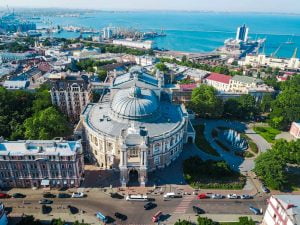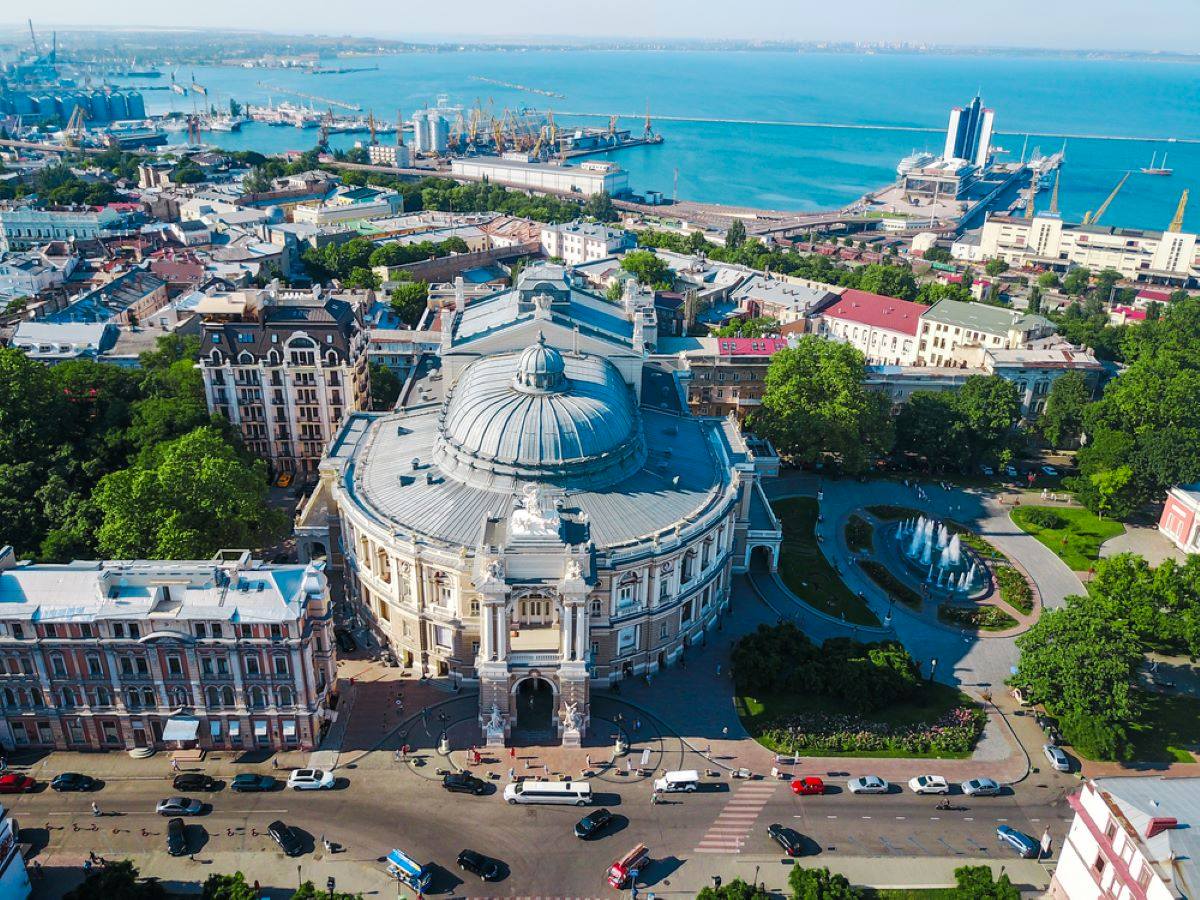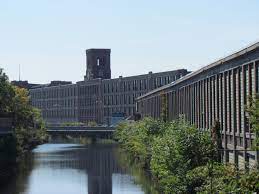The seizure of Odessa would solidify President Vladimir Putin’s control of Ukraine’s Black Sea coast. Russian troops have already captured several smaller port cities, shelling civilians and destroying infrastructure along the way. An assault on this city of 1,000,000 people will place Putin’s name alongside Tsar Nicholas II and Joseph Stalin as one of the Russian Empire’s greatest criminals.
Odessa was long a center of international exchange, artistic expression, and enlightened education for free thinkers from across the Empire and is today recognized as a UNESCO World Heritage site. Lev Davidovich Bronstein spent a happy part of his boyhood at school in the city before making his mark under the name of Leon Trotsky. By the early twentieth century, Odessa’s population was one of the most internationally diverse in the Russian Empire, typical of a major port city, including roughly 30 percent Jewish people.

Odessa Opera House and port
Understood as a relatively open city—even under the autocracy—Odessa first came to political prominence during the 1905 Russian Revolution. After much of the Russian Navy was obliterated in Port Arthur in a war with Japan, mass strikes and uprisings swept across the Empire. In one of the most famous rebellions of the revolutionary movement, sailors aboard the Battleship Potemkin mutinied, arrested their officers, and steamed into port at Odessa where they were greeted as heroes by the local population. The Tsar’s High Command eventually retook the ship, but not before conducting a bloody attack on the city and the sailors, all of which was portrayed in Sergei Eisenstein’s groundbreaking film. In the aftermath, forces loyal to the Tsar unleashed a pogrom—a race massacre— against the city’s Jewish population that left hundreds dead as part of a reactionary campaign to squash the 1905 movement.
Odessa, like the rest of Ukraine, suffered under Stalin’s campaign to strangle the vestiges of the 1917 Revolution and consolidate his power. Yet, the city survived with much of its international mix intact. Prior to the Holocaust, Jewish people accounted for up to 40 percent of the local population before the occupying Nazis carried out their genocidal extermination campaign, cutting the population in half. And although Stalin continued to persecute Jewish people after World War II, Odessa retained its reputation as a relatively tolerant refuge with a vibrant ethnic and cultural mix.
After the fall of the Soviet Union, emigration reduced the city’s Jewish population to today’s 1.2 percent, but almost 10 percent today are minorities, including Bulgarians, Moldavans, Belarusians, Armenians, Poles, Turks, Romanians, Azeris and more. Additionally, tens of thousands of foreign students from Ghana to the U.S. to China are studying in Ukraine, including many in Odessa. That leaves approximately 68 percent ethnic Ukrainians and 25 percent ethnic Russians.
A military assault on Odessa by Putin’s forces will not only cause civilian deaths and injuries, destroy infrastructure, and put the city’s cultural heritage in danger, it might also provoke new rounds of ethnic division and violence. We know this from the experience of the U.S. bombing of Baghdad and invasion of Iraq.
Putin may think of himself as Peter the Great, but he’s acting more like Nicholas II. We can only hope that people all over the former Empire will follow the heroic example of the Russian sailors aboard the Battleship Potemkin and their Ukrainian comrades in Odessa.




